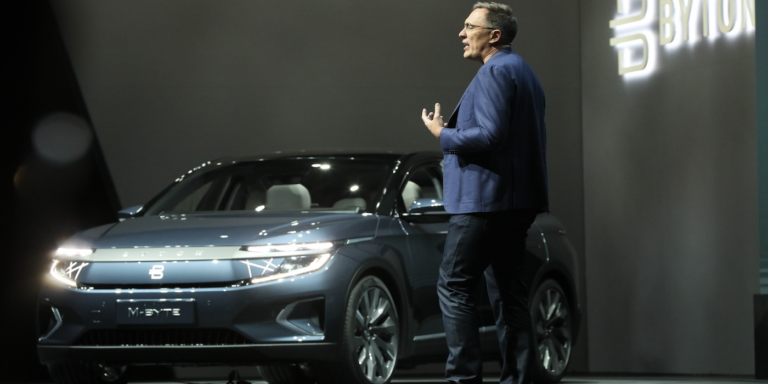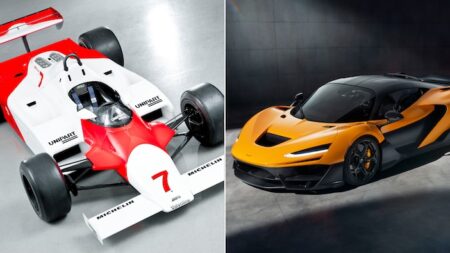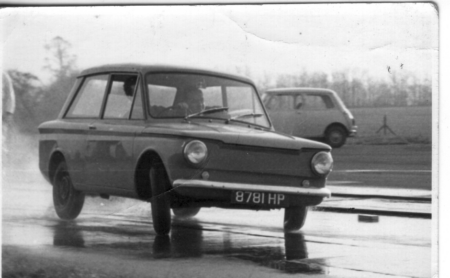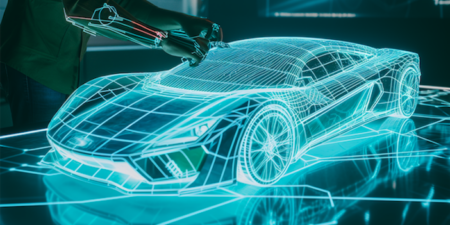At CES 2020, experts expect to see a wide range of companies touting their newest ideas, concepts and production-ready innovations, from automakers and traditional industry suppliers, to start-ups and mega technology firms – all with the aim of reinventing what the automobile is and what it can do.
Regarding the automotive industry, the announcements made and exhibits on display at CES (the Consumer Electronics Show) will relate to these broad themes:
- Automated driving today and autonomous mobility of the future
- Data monetisation and the transformation of the connected car
- Evolution of in-vehicle user experience, from software to virtual assistants
- Architecture transformation from ECUs to servers on wheels
Each category has an amazing breadth and depth as firms both inside and outside the automotive industry position themselves for the biggest piece of what is expected to be a very lucrative pie.
ADAS to autonomy
2019 was a year of realignment, realigning expectations for the deployment of SAE Level 4 and Level 5 autonomous vehicles, and realigning strategies in vehicle content as well as research and development. Aggressive deployment timelines for autonomous driving have been recalibrated to match both the technical and business complexities of the challenge, while partnerships and joint ventures aimed at combining expertise and offsetting massive costs will continue to develop. Autonomous mobility will continue to shape the industry in the short and long term.
As a balance against the slower expected rollout of full autonomy, 2019 saw significant growth in the availability and standardisation of safety and convenience features known as ADAS and automated driving. This growth has been driven by a combination of strategic brand differentiation, planned regulatory updates, and consumers prioritising safety and convenience features. ADAS features focused on safety such as automatic emergency braking (AEB) are increasingly included as standard equipment in both premium and volume brands; convenience-oriented ADAS, but especially the latest generation of automated driving systems (classified as Level 2 and 3 under SAE J3016) now serve as the battleground for differentiation, branding and technology leadership.
IHS Markit projects Level 2 and Level 3 automated vehicles will grow at a compound annual growth rate (CAGR) of nearly 21% between 2019 and 2025 as brands expand their tech offerings and adapt to changing market demands.
CES 2020 will see a wide variety of companies showcasing their latest innovations for both automated and autonomous vehicles, including camera, radar, lidar and other technologies. Consumers will continue to await mainstream autonomy, but today’s ADAS and automated driving features will satisfy most consumers’ demands while also providing critical growth for the industry to continue investing in autonomous mobility over the long term.
Data in the connected car
CES 2020 will prove that data rules the day. For the last few years, the headlines around connected cars have been focused on new use-cases and developing business models in this new vehicle ecosystem. The importance of vehicle-to-everything (V2X) technology, the convenience and opportunity of bringing our personal connected lifestyles into the car, and either the intrigue or anxiety around the emerging concept of in-car advertising are a few examples of this.
Many of these stories had to do with enabling hardware, ranging from connecting the fleet of new vehicles to ensuring these sensors and antennas can handle the future needs of data-hungry users. In 2019 more than 50 million new vehicles were produced with a telematics control unit. In 2025, that number will reach nearly 72 million, according to IHS Markit forecasts. Equally as important is the fact that 99% of these TCUs will offer 4G LTE or greater bandwidth in 2025, compared to 80% in 2019.
This year, CES will highlight the next big industry transformation that revolves around how the data coming from these antennas and sensors can be monetised. From the evolution of connected services, location-based commerce, new in-car payment techniques and a significant amount of work being done around the collection, cleansing and shaping of data exchange itself – this market is no longer strictly focused on selling hard parts. CES 2020 will tell the story of the post-sale content and revenue opportunities stemming from these vehicles for years to come.
Transforming the user experience
For the majority of the past decade, the interior of the vehicle has lagged behind the consumer electronic device market in terms of technology. While the Apple iPhone and Android phones were getting larger, faster, and filled with more content, displays in vehicles remained in the 5-8-inch range and were not being made a priority in the vehicle. Automakers have come to the realisation that their technology on the interior of the vehicle is not only an important factor in a consumer’s purchase, but also a brand differentiator. From 2019 to 2025, IHS Markit estimates nearly 46 million additional displays will proliferate through the cockpit of new and refreshed vehicle interiors (some vehicles will have multiple displays). At CES this year, we can expect automakers and suppliers to continue the trend of showcasing even more, and even larger, displays in vehicles.
However, user experience is not just about the displays in the vehicle. It is how a person interacts with the vehicle, from the time they approach the car door to the time they leave their vehicle and shut the door at their destination. Automakers are finding new methods and refining existing ways to improve the overall user experience. Visually, we will soon see Augmented Reality head-up displays (AR-HUD) located on the front windshield of the vehicle launched in vehicle platforms. AR-HUDs will create the perception that information is on the road, including the vehicle’s speed, navigation directions and hazards.
Audibly, virtual personal assistants (VPAs) will continue to take centre stage as automakers rethink the way consumers interact with their vehicles. Announcements are expected around the proliferation of the likes of Amazon Alexa, Google Assistant, and even OEM-branded VPA platforms.
From ECUs to servers
Cars are getting smarter and greener. In large part, this is because of advances in the semiconductors being used in cars. Self-driving cars and infotainment will be prominently featured at CES again this year, both the beneficiaries of the convergence between consumer and automotive electronics. These advances are paving way to the increased use of System-on-Chip (SoC) that bring a level of computing capability previously unknown in automotive applications. Along with this computing capability, there is a similar convergence with memory and storage devices. As SoCs become more common, there will be a corresponding increase in memory usage and the requirement to support more capable sensors. Today, cars have a limited number of cameras and radar – and lidar is still more the exception than the rule. Vehicles will go from limited usage of cameras and radar to as many as twelve higher resolution cameras, more radar sensors, and even lidar will begin to appear.
According to IHS Markit, total semiconductors will have a CAGR of 7.6% between 2018 and 2025. For ADAS, infotainment, and EV/HEV the total semiconductor CAGR is 13.6%, while SOCs and memory will have CAGRs of 18% and 16.1%, respectively.
The combination of SoCs and memory is allowing electronic control units (ECUs) to be consolidated into domain controllers, making the implementation of self-driving functionality more feasible than trying to manage numerous independent ECUs. In infotainment, the cockpit domain controller is emerging to control the instrument cluster, heads-up display, head unit, heating and air conditioning, centre stack display, and rear seat entertainment systems. Domain controllers will eventually result in the vehicle’s architecture becoming more centralised with high-speed Ethernet.
In terms of making cars greener, the electrification of the powertrain continues to eliminate or reduce the size of internal combustion engine. In addition to using SoCs, advances in Silicon Carbon (SiC) and Gallium nitride (GaN) power devices are making the use of these devices more practical. These devices in general operate at higher voltages and switch faster than their silicon counterparts, making them attractive in electric (EV) and hybrid electric vehicles (HEV). These advancements stem from the convergence of consumer technology and automotive, and are expected to be on full display at CES this year.





